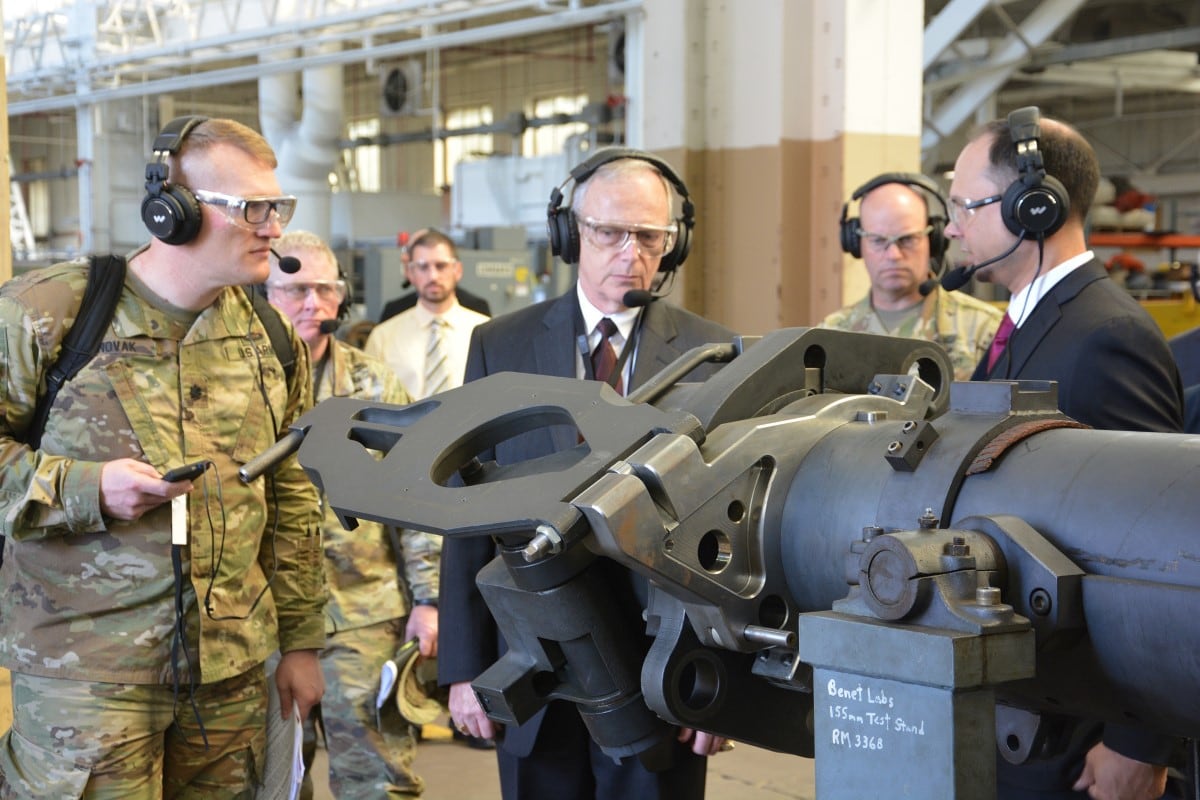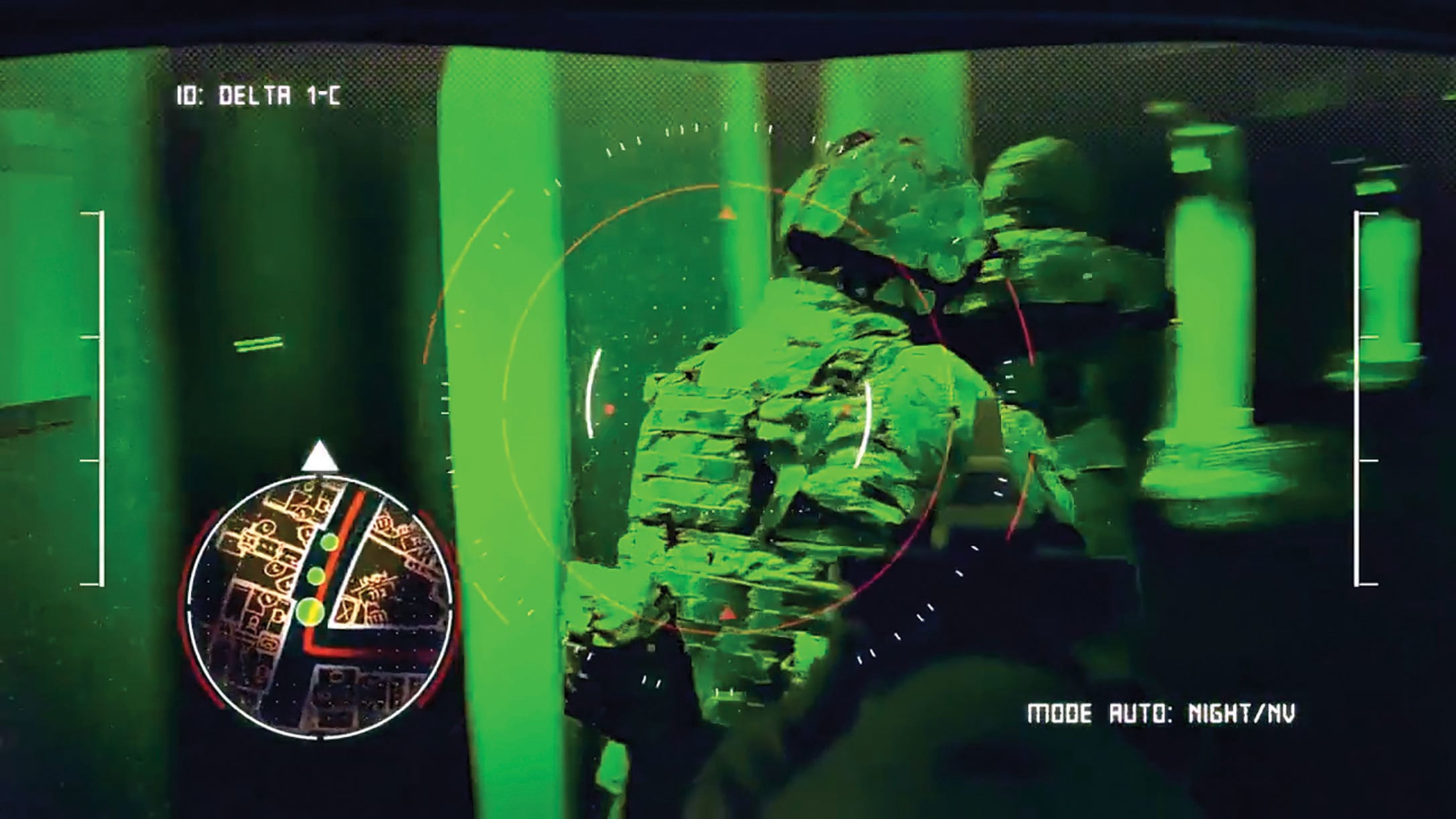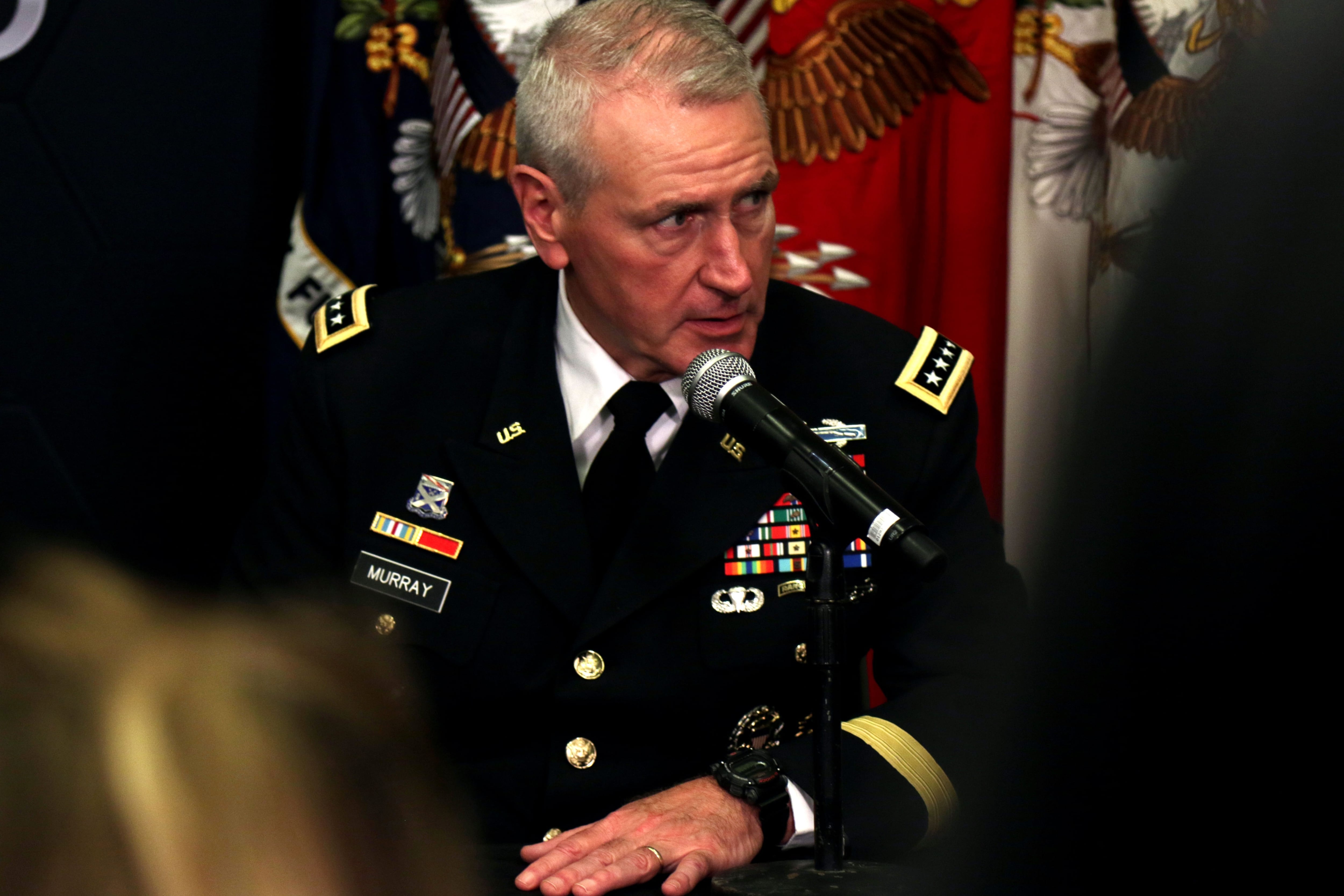Army Gen. John Murray, commander of the new Army Futures Command, outlined top priorities for the Army as it grows its systems, and cited targets for improvement, when he spoke to military and industry leaders Tuesday.
The aim of Army Futures Command is to provide concepts, capabilities and organizational structures for future soldiers to dominate a future battlefield. The command works closely with the eight “cross-functional teams” that focus on top modernization priorities, those teams include: long-range precision fires, the Next Generation Combat Vehicle, Air and Missile defense, Future Vertical Lift, Army Network, Synthetic Training Environment, Assured Position and Navigation and Soldier Lethality.
Here are takeaways from Murray’s talk at the Association of the United States Army on Tuesday, edited for length and continuity.
1. The top priority for future systems is adaptable growth.
Murray told the audience that Army Chief of Staff Gen. Mark Milley has made the ability to grow new systems over long periods a top priority.
The AFC commander offered the existing Bradley Fighting Vehicle as an example. The Bradley concept went on the drawing board in the 1960s but didn’t come into the formations until the early 1980s. It has been incrementally upgraded for more than four decades to continue service.
The Next Generation Combat Vehicle must do the same. It will arrive with advanced capabilities but must continue to be upgraded and adapted. Specifically, its onboard power must be able to be increased as power needs on the future battlefield will be greater than they are today.
“That’s the one thing we know that’s going to go up is you’re going to hang more stuff on a vehicle and and it’s going to take more and more power,” Murray said. “So the ability for that vehicle to generate more onboard power was the number one growth requirement.”
And improvements won’t wait on full fielding.
Realistically, Murray said, the Army will be able to field about a brigade’s worth of NGCVs each year under current budgets. That means 20 years before all Army ABCTs are fielded. But version two of the NGCV won’t wait on version one in the fielding calendar. New iterations will fill the inventory as the vehicle advances.
RELATED

2. Multi-Domain Operations is the concept that ties all efforts together.
Past efforts at radical change to Army platforms, such as failed efforts to effectively field the Comanche helicopter, Crusader self-propelled artillery and Future Combat Systems brigade-level manned-unmanned vehicle teams, faced a number of challenges that led to their cancellations, Murray said.
The current push has the MDO concept of future warfare driving the individual programs, cross-functional teams and the futures command.
Part of the past failures involved messaging. As Murray explained, when the Army went to Congress and said it needed a cannon that fired twice as far, the explanation was because it was better to fire twice as far. By pointing to the near-peer threats and realistic scenarios on actual terrain such as regional flare-ups with China and Russia, there’s more understanding of why the Army needs what it needs and why it’s important.
3. Budget delays will slow programs and reduce quantities.
The use in recent years of a continuing resolution to intermittently fund Pentagon priorities rather than a full, annual budget will have impact on Army priorities.
Murray said that the Army will continue to prioritize readiness over future commitments.
That means that if budgets are delayed or they dwindle, the projected timelines will shift out longer. Also, quantities of items that the Army needs will take a hit.
Anticipated quantities of vehicles, tactical kit, weapons and necessary munitions for both current operations and stockpiles may be reduced.
4. The Army’s culture of risk aversion needs to change.
He was pushed by many early after his appointment that the Army culture would have to change if it wants to work with top flight technology companies, firms and employees. The general doesn’t necessarily agree.
The core values and initiatives of the Army must remain the same, he said. But what will have to change is the Army’s culture of risk aversion, Murray said.
In the past few decades, anytime something failed in acquisition, a new regulation, instruction or law was put in place. That’s resulted in a maze of regulations that slow-walk items through development and discourage risk taking.
Murray cautioned that the first true test will come when something fails. If the Army or Congress crushes the responsible individual or program then they’ll never change the risk-averse Army culture.
And the Army must better communicate what it does and why it does it, he said.
He was asked about protests by some Microsoft employees after learning that their HoloLens technology would be the base component of the new Integrated Visual Augmentation System, which will blend augmented reality, night vision, way-finding and targeting information much like a jet fighter pilot’s helmet but in an infantryman’s goggles.
As artificial intelligence becomes more prevalent, ultimately the American people will decide what is the ethical application of AI and what is not, he said. The military-to-industry and military-to-civilian conversation is important, he said.
He noted that other countries are not having the conversation and are instead leading AI implementation on the battlefield. The U.S. public needs to understand the threats and uses of AI and other advanced tech.
“AI is coming to the battlefield, it’s not a question of if, it’s when and who,” he said.
RELATED

Todd South has written about crime, courts, government and the military for multiple publications since 2004 and was named a 2014 Pulitzer finalist for a co-written project on witness intimidation. Todd is a Marine veteran of the Iraq War.





